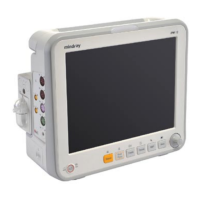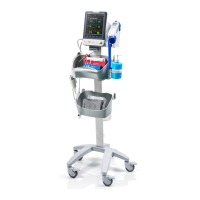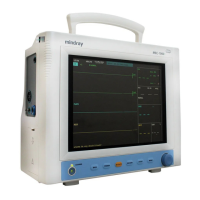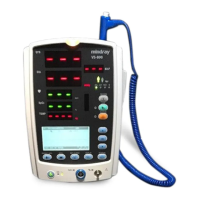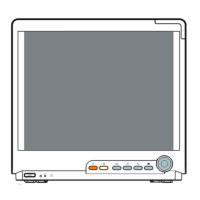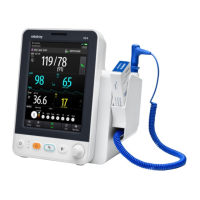3-21
3.7.3 Patient Leakage Current Test
1. Connect the 601 safety analyzer to an AC power supply (264 V, 60 Hz).
2. Connect SUM terminal of the applied part connection apparatus to RA input terminal
of 601 safety analyzer, another terminal to the applied part of EUT.
3. Connect the EUT to the analyzer’s auxiliary output connector using a power cord.
4. Power on the 601 safety analyzer and then press the “6-Patient leakage” button on the
analyzer’s panel to enter the Patient leakage test screen.
5. Repeatedly press the “Applied Part” button to measure AC and DC leakage
alternatively. DC leakage reading is following by “DC”.
6. Under normal status, the patient leakage current should be no greater than 10 µA.
Under single fault condition, it should be no greater than 50 µA.
3.7.4 Patient Auxiliary Leakage Current Test
1. Connect the 601 safety analyzer to an AC source (264 V, 60 Hz).
2. Connect the equipment under test (EUT) to the analyzer’s auxiliary output connector
using a power cord.
3. Connect the sensors of the applied part to the applied part connection apparatus, whose
RA-P terminal is connected to 601 safety analyzer’s RA terminal (which is turned on)
and SUM terminal to 601 safety analyzer’s LA terminal. RA terminal is switched to
on.
4. Power on the 601 safety analyzer and then press the “8-Patient Auxiliary Current
Test” button on the analyzer’s panel to enter the patient auxiliary current test screen.
5. Repeatedly press the “Applied Part” button to measure AC and DC leakage
alternatively. DC leakage reading is following by “DC”.
6. Under normal status, the patient auxiliary leakage current should be no greater than 10
µA. Under single fault condition, it should be no greater than 50 µA.

